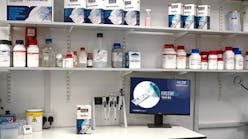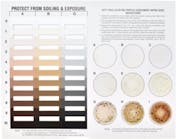Control of Fuel System Icing Inhibitor and Diesel Exhaust Fluid at Airports
Do you fuel aircraft with jet fuel containing fuel system icing inhibitor/anti-icing additive? It is critical to flight safety to ensure that controls are in place to prevent FSII/anti-icing additive/PRIST/DICE being confused with Diesel Exhaust Fluid/AdBlue that is required for fueling truck exhaust systems. Watch this animation to understand why and download the free publication, EI 1538, that describes the controls that should be implemented.
The FAA reports between November 2017 and May 2019, there were three events of jet fuel contamination with diesel exhaust fluid (DEF). DEF is not a jet fuel additive; however, it is used in diesel truck exhaust systems to meet the Environmental Protection Agency (EPA) requirements to reduce nitrogen oxide (NOx) emissions. When DEF is mixed with jet fuel, it forms crystals and clogs fuel filters and nozzles, leading to engine shut downs and other engine operability issues. In these three events, 15 civilian and three military aircraft were fueled with contaminated jet fuel, and, of these, six civilian and 3 military aircraft had to perform emergency landings.
The FAA has developed multiple risk mitigation strategies to address the hazards associated with DEF contamination of jet fuel:
- Issued a new Special Airworthiness Information Bulletin (SAIB) AIR-21-08 that includes DEF information and pictures to replace the existing Advisory Circular (AC) 20-43C, Aircraft Fuel Control.
- Revised AC 150/5230-4C, Aircraft Fuel Storage, Handling, Training, and Dispensing on Airports, on September 23, 2021, to incorporate fuel additive training, to include DEF and FSII handling, and sent a letter to all airport operators warning of this safety risk.
The Energy Institute video shows several ways to minimize the risk of jet fuel contamination with DEF happening in the future.



